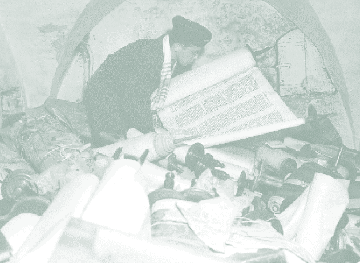
PLUNDER AND RESTITUTION:
Findings and Recommendations of the
Presidential Advisory Commission on Holocaust Assets in the United
States and Staff Report
DECEMBER 2000
Courtesy National Archives, photo nos. 111-SC-209154
|
DECEMBER 2000 Courtesy National Archives, photo nos. 111-SC-209154 |
The Creation of the Presidential Advisory Commission on Holocaust
Assets in the United States
Findings
Implementation of Restitution Policy in Europe
Victims' assets were restituted to countries and organizations, not individuals
Currencies were returned to the government of issue
Victims' assets were turned over to humanitarian organizations
German officials were entrusted with restitution responsibilities
Austrian officials were entrusted with restitution responsibilities
Implementation of Restitution Policy in the United States
Claims procedures for restitution were flawed
The Alien Property Custodian prolonged adjudications
Victims' assets may have been used to pay U.S. war claims
Restitution efforts of recipient countries were not monitored
Duty was assessed on victims' assets
The $500,000 lump sum settlement of Office of Alien Property claims was inadequate
Agreements Negotiated by the Commission in the Public and Private Sectors
The National Gallery of Art has agreed to return a painting to its rightful owners
The museum community has agreed to full disclosure of Holocaust-era works and their provenance
The Context of the Commission's Recommendations
A. Public Law 105-186, 105th Congress
B. Activities of the Presidential Advisory Commission on Holocaust Assets in the United States
C. Staff Contributing to Commission's Work
Staff
Report
Executive
Summary
Creation of the Presidential Commission and Its Purpose
Estimate of Assets in U.S. Possession or Control
Chapter II: From Nazi Expropriation to U.S. Control
The U.S. Army and the Discovery of Assets
Control of Victims' Assets in the United States
The United States Treasury Department and Frozen Assets
The Bureau of Customs, Import Prohibitions, and the Post Office
Chapter III: Assets in the United States
Foreign Funds Control and the "Freezing" of Assets
Aliens, Nationals, Enemies, Friends
"Vesting" Assets and the Office of Alien Property Custodian
Creation of the Office of Alien Property Custodian
Protecting Art and Cultural Objects in North Africa & Sicily
Preparations for the Final Offensive into Germany and Austria
MFA&A Roles and Responsibilities
Other Organizations Participating in the Recovery of Assets
Directives on the Control of Assets in Germany and Austria
Intelligence on German Looting and the Location of Valuables
Discovery of Caches During the Final Offensive
Initial Activities Following the German Surrender
Consolidation of Assets--Establishing Collecting Points
Operation of Collecting Points
The Case of the Hungarian Gold Train
Chapter V: Restitution of Victim's Assets
Restitution to Countries, Not Individuals (External Restitution)
Victims' Assets and the Paris Reparations Agreement
The Restitution of Identifiable Property in Germany: Law 59
Recovery of Property in the United States
The JRSO and Recovery of Heirless Assets in the United States
Chapter VI: Heirless Assets and the Role of Jewish Cultural Reconstruction, Inc.
Jewish Cultural Reconstruction, Inc.: Origins and Purposes
Seizures of Assets from Sinti and Roma, Homosexual and Disabled Victims of the Holocaust
Third Country Avenues for the Importation of Looted Assets into the United States
The Quantification of Holocaust Victims' Assets
The Relationship between Jewish Organizations and U.S. Government Agencies
The Presence of Victim Gold Circulating in the International Market
The Role of State Governments in Handling Dormant Assets
Comprehensive Integration of Findings from Other National Commissions